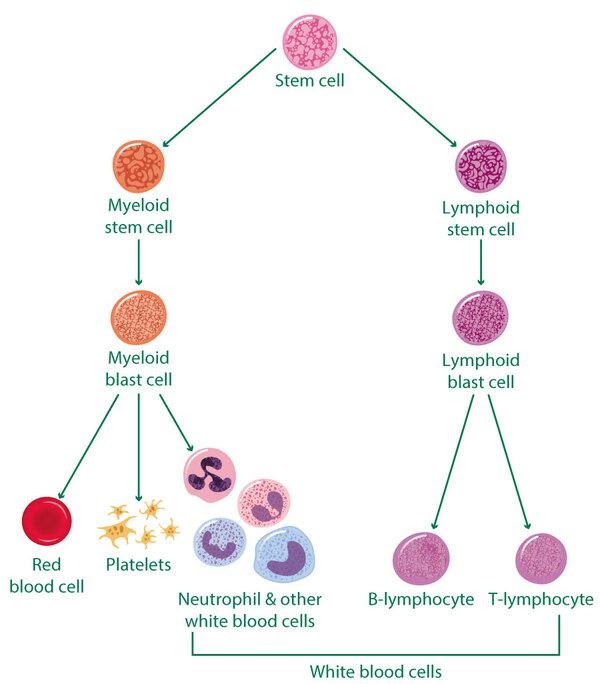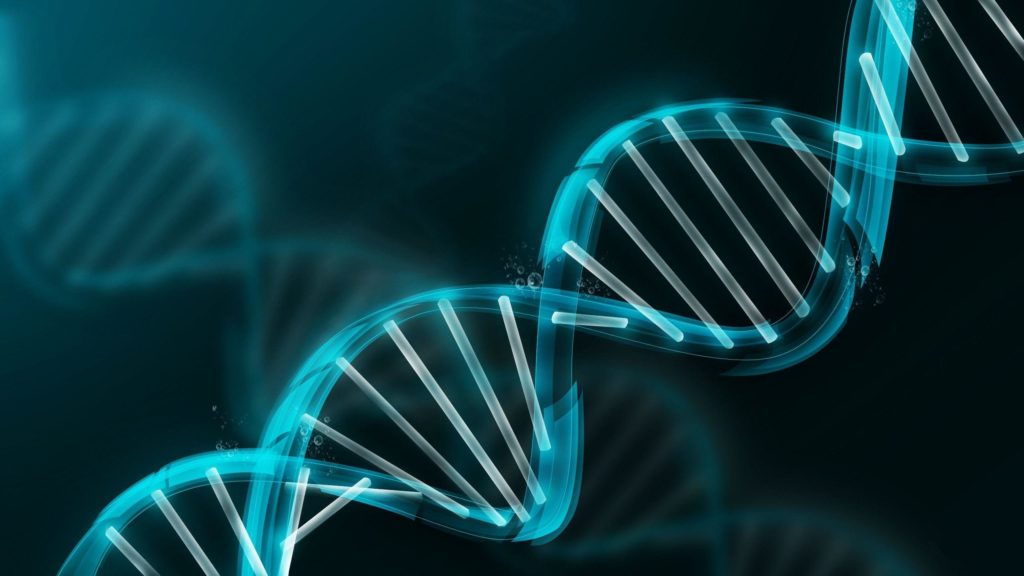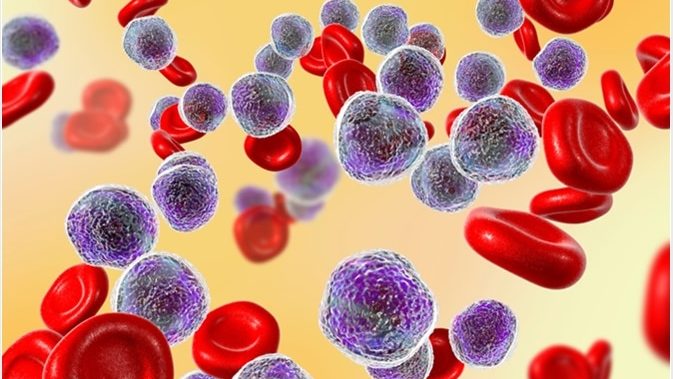
- Acute Lymphoblastic Leukaemia (also called ALL or ALL leukaemia) is a rare cancer of the blood cells.
- It is an acute leukaemia and can cause symptoms very quickly.
- It can develop in people of any age, but is more common in children and young people, and in people over the age of 75.
- Blood cells are made in the bone marrow. This is a spongy material found inside our bones.
- Every blood cell grows from a stem cell in the bone marrow. Normally, the stem cells make an early stage of the blood cell called a blast. These blasts develop into healthy blood cells.
- In ALL, the lymphoid stem cells make abnormal blasts that do not fully develop.
- These abnormal blasts are called leukaemia cells.
- Lymphocytes usually fight and prevent infections.
- However, the leukaemia cells cannot fight infection like normal lymphocytes.
- They also fill up the bone marrow.
- This means there is not enough space to make the usual numbers of healthy white blood cells, red blood cells and platelets that your body needs.
What Causes ALL?
Stage 1 - A genetic ‘accident’
1% go on to develop ALL

Stage 2 – Exposure to Infection
Priming of the Immune System

Facts & Costs
- About 75% of childhood Leukaemia is ALL
- 800 children a year in the UK are diagnosed with ALL
- 3,500 children a year in the US are diagnosed with ALL
- Rates of ALL in the west are increasing at c.1% per year
- Treatment costs range between £150,000 to £1.5m (or $200,000 to $2m in the US)
- At the lower end of the cost range the Total Annual cost £6.5m ($8.8m)
- Plus the emotional impact, the side effects, impact on family and education
